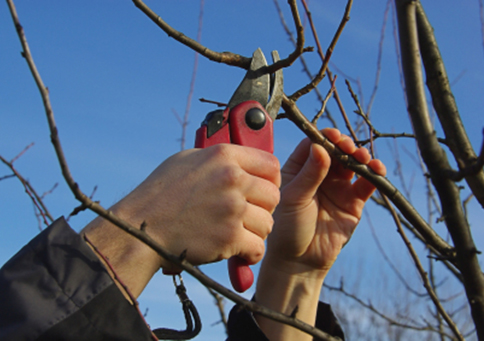Tree Pruning

Tree pruning is the most common tree maintenance procedure next to watering. Maintenance pruning is often desirable or necessary to remove dead, diseased, or insect-infested branches and to improve tree structure, enhance vigor, or maintain safety. Because each cut has the potential to change the growth of (or cause damage to) a tree, no branch should be removed without a reason.
Removing foliage from a tree has two distinct effects on its growth. Removing leaves reduces photosynthesis and may reduce overall growth. That is why tree pruning should always be performed sparingly. Over-pruning is extremely harmful because without enough leaves, a tree cannot gather and process enough sunlight to survive. However, after pruning, the growth that does occur takes place on fewer shoots, so they tend to grow longer than they would without pruning. Understanding how the tree responds to pruning should assist you when selecting branches for removal
Pruning mature trees may require special equipment, training, and experience. If the pruning work requires climbing, the use of a chain or hand saw, or the removal of large limbs, then using personal safety equipment, such as protective eye-wear and hearing protection, is a must. Arborists can provide a variety of services to assist in performing the job safely and reducing risk of personal injury and damage to your property. They also are able to determine which type of pruning is necessary to maintain or improve the health, appearance, and safety of your trees.

